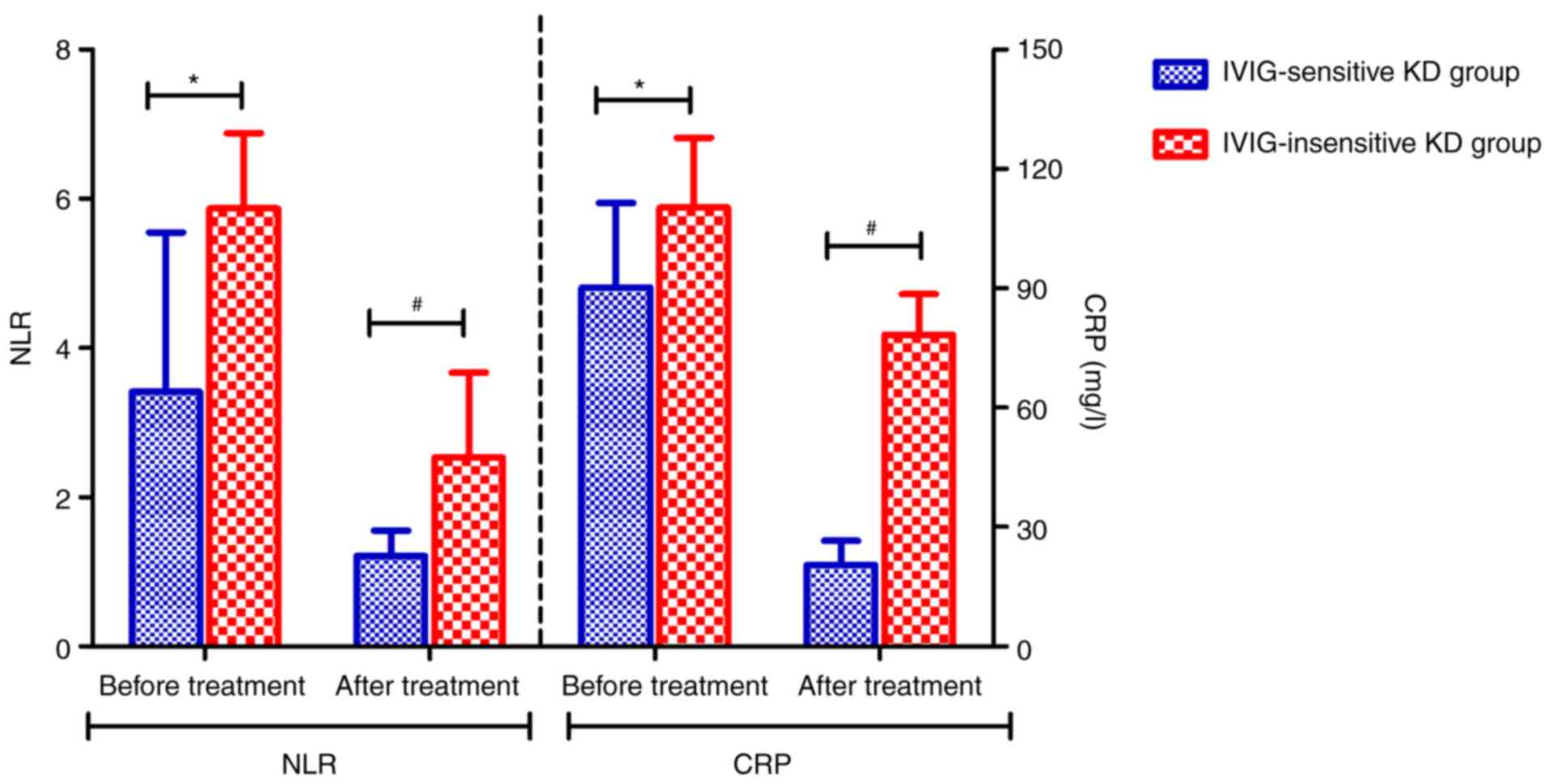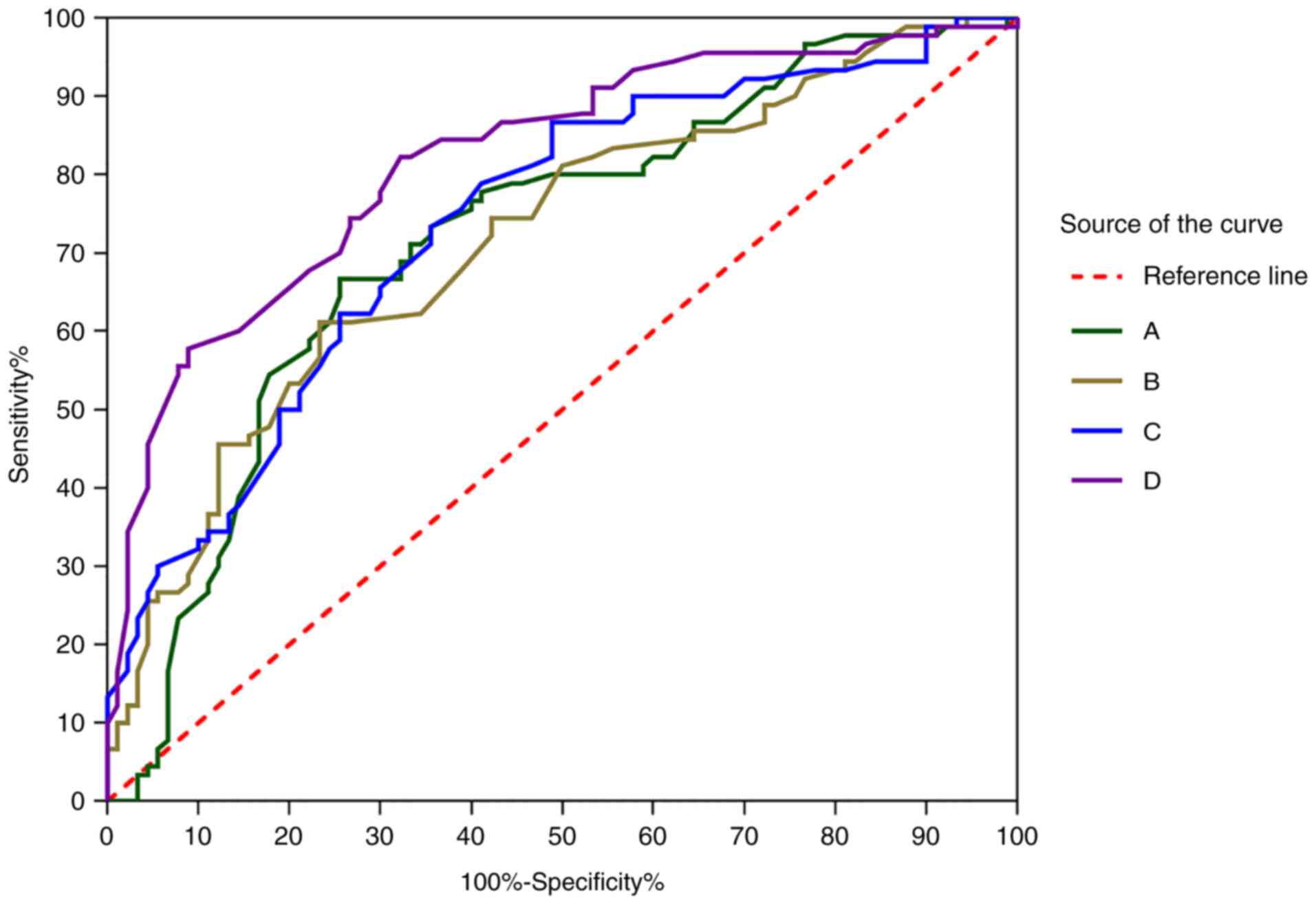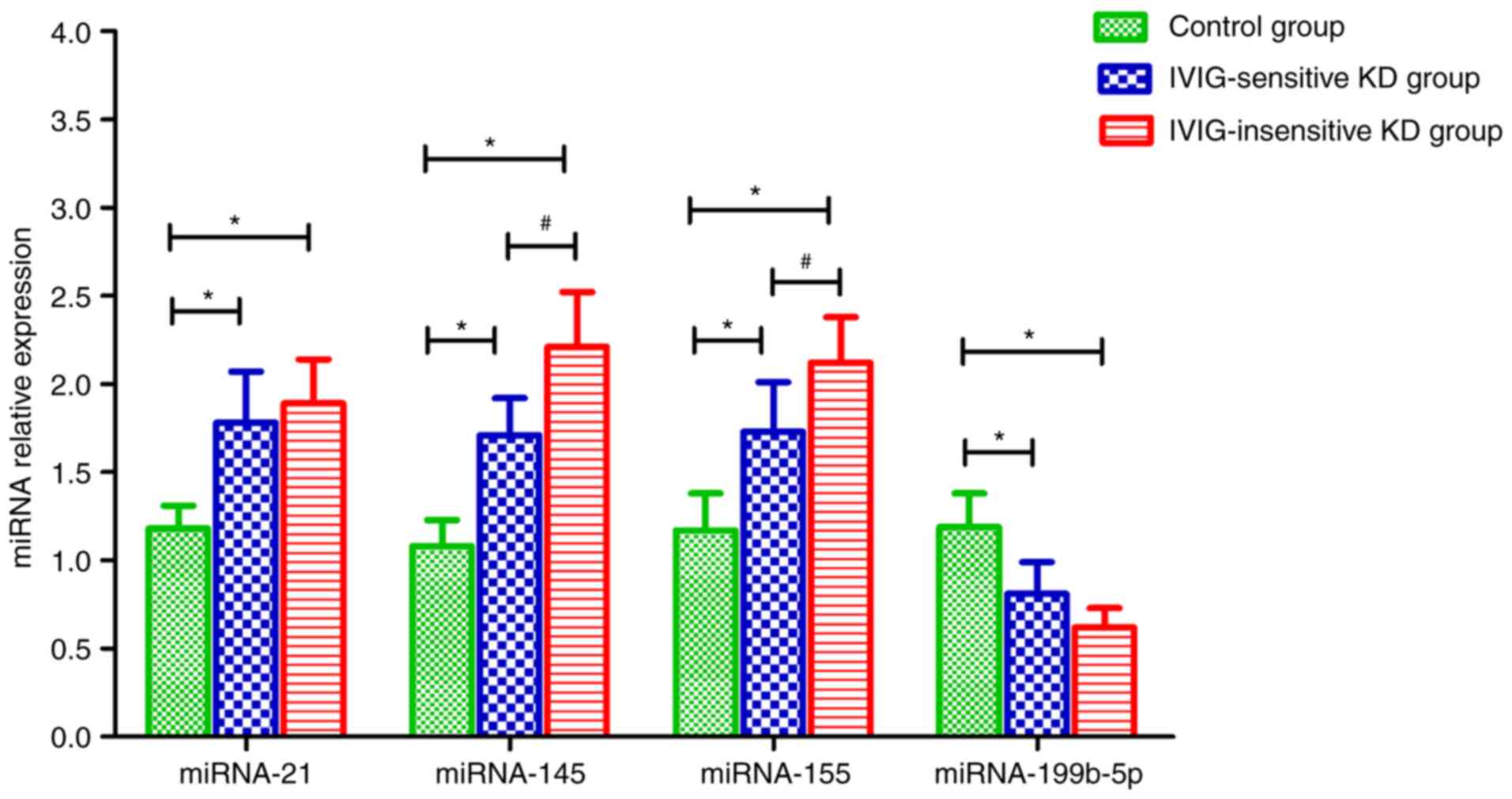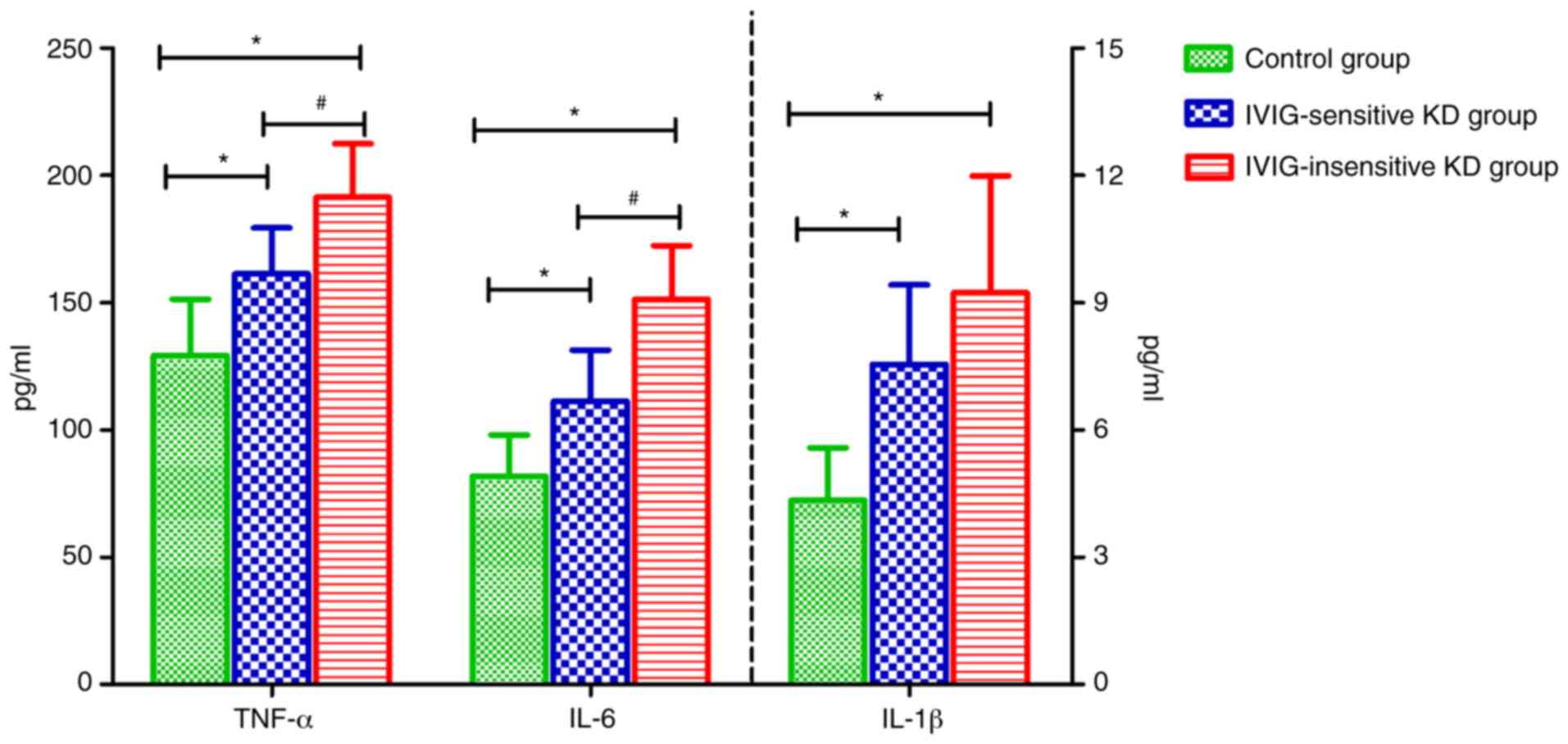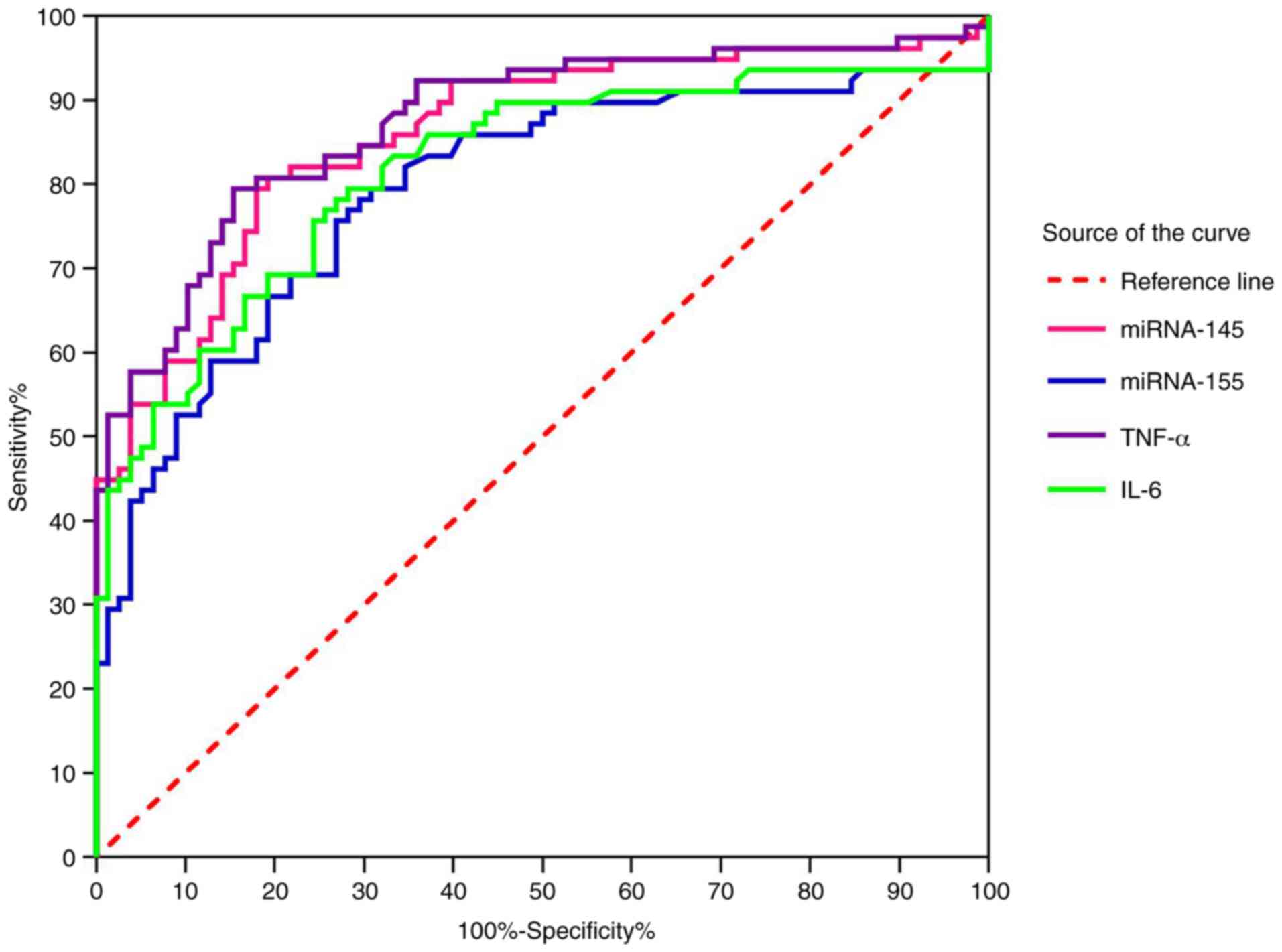|
1
|
Lazea C, Man O, Sur LM, Serban R and Lazar
C: Unusual presentation of kawasaki disease with gastrointestinal
and renal manifestations. Ther Clin Risk Manag. 49:1411–1416.
2019.PubMed/NCBI View Article : Google Scholar
|
|
2
|
Eleftheriou D, Levin M, Shingadia D,
Tulloh R, Klein NJ and Brogan PA: Management of Kawasaki disease.
Arch Dis Child. 99:74–83. 2014.PubMed/NCBI View Article : Google Scholar
|
|
3
|
Kowalczyk M, Turska-Kmieć A, Ziółkowska L,
Raszek M and Kawalec W: Symptoms, diagnosis and characteristic
abnormalities in the coronary arteries in Kawasaki disease in
children. Med Wieku Rozwoj. 14:344–349. 2010.PubMed/NCBI(In Polish).
|
|
4
|
Pacheco DA, Miller CR, Boor PJ and Mambo
NC: Incomplete Kawasaki disease with development of fatal coronary
artery thrombosis in a 13-year-old male. Cardiovasc Pathol.
42:54–58. 2019.PubMed/NCBI View Article : Google Scholar
|
|
5
|
Shi H, Qiu H, Jin Z, Li C, Yang X, Huang
C, Wu R, Zhuang G and Chu M: Coronary artery lesion risk and
mediating mechanism in children with complete and incomplete
Kawasaki disease. J Investig Med. 67:950–956. 2019.PubMed/NCBI View Article : Google Scholar
|
|
6
|
Ellepola C, Borsheim K, James J, Mitchell
M, Gudausky T and Frommelt PC: Giant thrombotic right coronary
aneurysm in an infant with undiagnosed incomplete Kawasaki disease
and rapidly progressive cardiovascular collapse. CASE (Phila).
3:250–254. 2019.PubMed/NCBI View Article : Google Scholar
|
|
7
|
Ha KS, Lee J, Jang GY, Lee JB, Lee KC, Son
CS and Lee JW: Value of neutrophil-lymphocyteratio in predicting
outcomes in Kawasaki disease. Am J Cardiol. 116:301–306.
2015.PubMed/NCBI View Article : Google Scholar
|
|
8
|
Tazón-Varela MA, Alonso-Valle H and
Muñoz-Cacho P: On the usefulness of N-terminal prohormone of brain
natriuretic peptide for the diagnosis of incomplete Kawasaki
disease. Emergencias. 31:366–367. 2019.PubMed/NCBI
|
|
9
|
Hwang SY, Shin TG, Jo IJ, Jeon K, Suh GY,
Lee TR, Yoon H, Cha WC and Sim MS: Neutrophil-to-lymphocyte ratio
as a prognostic marker in critically-ill septic patients. Am J
Emerg Med. 35:234–239. 2017.PubMed/NCBI View Article : Google Scholar
|
|
10
|
Azab B, Zaher M, Weiserbs KF, Torbey E,
Lacossiere K, Gaddam S, Gobunsuy R, Jadonath S, Baldari D, McCord D
and Lafferty J: Usefulness of neutrophilto lymphocyte ratio in
predicting short- and long-term mortalityafter non-ST-elevation
myocardial infarction. Am J Cardiol. 106:470–476. 2010.PubMed/NCBI View Article : Google Scholar
|
|
11
|
Yamaji N, da Silva Lopes K, Shoda T,
Ishitsuka K, Kobayashi T, Ota E and Mori R: TNF-α blockers for the
treatment of Kawasaki disease in children. Cochrane Database Syst
Rev. 8(CD012448)2019.PubMed/NCBI View Article : Google Scholar
|
|
12
|
Kyuno D, Zhao K, Bauer N, Ryschich E and
Zöller M: Therapeutic targeting cancer-initiating cell markers by
exosome mirna: Efficacy and functional consequences exemplified for
claudin7 and EpCAM. Transl Oncol. 12:191–199. 2019.PubMed/NCBI View Article : Google Scholar
|
|
13
|
Sheng W, Gao C and Guan H: Expression and
its significance of MicroRNA-1 4 5 and MicroRNA-1 4 3 in plasma in
children with Kawasaki disease. J Mod Lab Med. 31:34–37. 2016.
|
|
14
|
Xie Y, Li W, Feng J, Wu T and Li J:
MicroRNA-363 and GATA-1 are regulated by HIF-1α in K562 cells under
hypoxia. Mol Med Rep. 14:2503–2510. 2016.PubMed/NCBI View Article : Google Scholar
|
|
15
|
Busch A, Eken SM and Maegdefessel L:
Prospective and therapeutic screening value of non-coding RNA as
biomarkers in cardiovascular disease. Ann Transl Med.
4(236)2016.PubMed/NCBI View Article : Google Scholar
|
|
16
|
Yim D, Curtis N, Cheung M and Burgner D:
An update on Kawasaki disease II: Clinical features, diagnosis,
treatment andoutcomes. J Paediatr Child Health. 49:614–623.
2013.PubMed/NCBI View Article : Google Scholar
|
|
17
|
Zou YC, Yan LM, Gao YP, Wang ZY and Liu G:
miR-21 may act as a potential mediator between inflammation and
abnormal bone formation in ankylosing spondylitis based on TNF-α
concentration-dependent manner through the JAK2/STAT3 pathway. Dose
Response. 18(1559325819901239)2020.PubMed/NCBI View Article : Google Scholar
|
|
18
|
Yong Q, Nan Y, Lei Z, Li P, Liu K, Wu HW,
Shen Y and Li ZD: Expression of serum microRNA-145 in patients with
non-small cell lung cancer and its clinical significance. J Med
Postgra. 29:62–65. 2016.
|
|
19
|
Zhang X, Wang PH and Liao L: The test of
miRNA-155 and miRNA-26a for the children with bronchial asthma in
airway remodeling in the clinic application. J Chin Phys.
18:1506–1510. 2016.
|
|
20
|
LI WH, LI YX, Guo JK, Pan HG, Zhang YL and
Wang X: Overexpression of miR-199b-5p inhibits Ewing's sarcoma cell
lines by targeting CCNL1. Mol Med Rep. 12:3359–3364.
2015.PubMed/NCBI View Article : Google Scholar
|
|
21
|
Livak KJ and Schmittgen TD: Analysis of
relative gene expression data using real-time quantitative PCR and
the 2(-Delta Delta C(T)) method. Methods. 25:402–408.
2001.PubMed/NCBI View Article : Google Scholar
|
|
22
|
Chen Y, Hua Y, Zhang C, Chen S, Zhang Q,
Liao Y, Yan H, Wang Y, Liu P, Qi J, et al: Neutrophil-to-lymphocyte
ratio predicts intravenous immunoglobulin-resistance in infants
under 12-months old with Kawasaki disease. Front Pediatr.
7(81)2019.PubMed/NCBI View Article : Google Scholar
|
|
23
|
Nandi A, Pal P and Basu S: A comparison of
serum IL6 and CRP levels with respect to coronary changes and
treatment response in Kawasaki disease patients: A prospective
study. Rheumatol Int. 39:1797–1801. 2019.PubMed/NCBI View Article : Google Scholar
|
|
24
|
Yun KW, Lee JY, Yun SW, Lim IS and Choi
ES: Elevated serum level of MicroRNA (miRNA)-200c and miRNA-371-5p
in children with Kawasaki disease. Pediatr Cardiol. 35:745–752.
2014.PubMed/NCBI View Article : Google Scholar
|
|
25
|
Zhang X, Xiao XP, Ren XA and Cui T: Plasma
miRNA-155 levels predict atrial fibrillation recurrence after
cardioversion. Heart Surg Forum. 22:E140–E148. 2019.PubMed/NCBI View
Article : Google Scholar
|
|
26
|
Li J, Feng Shao F, Xu J, et al: Inhibition
effects of miR-217 on sepsis induced lung injury in rats based on
TLR4 signaling pathway. J Hainan Med University. 26:6–11. 2020.
|
|
27
|
Tang S, Yan LR, Ma ZG and Ji C: Influences
of the TLR4/NF-κB pathway on memory function and inflammatory
factors in rats with cerebral small vessel disease. Eur Rev Med
Pharmacol Sci. 23:6264–6271. 2019.PubMed/NCBI View Article : Google Scholar
|















